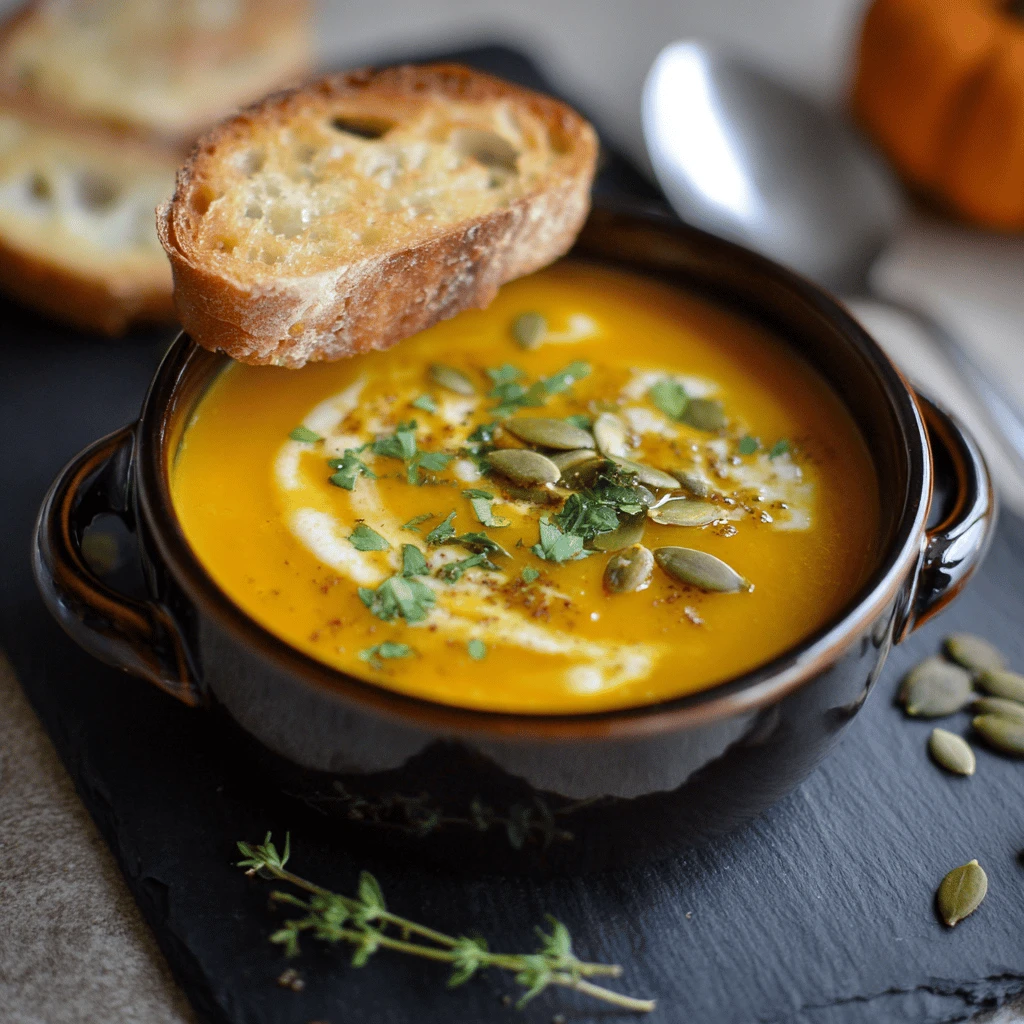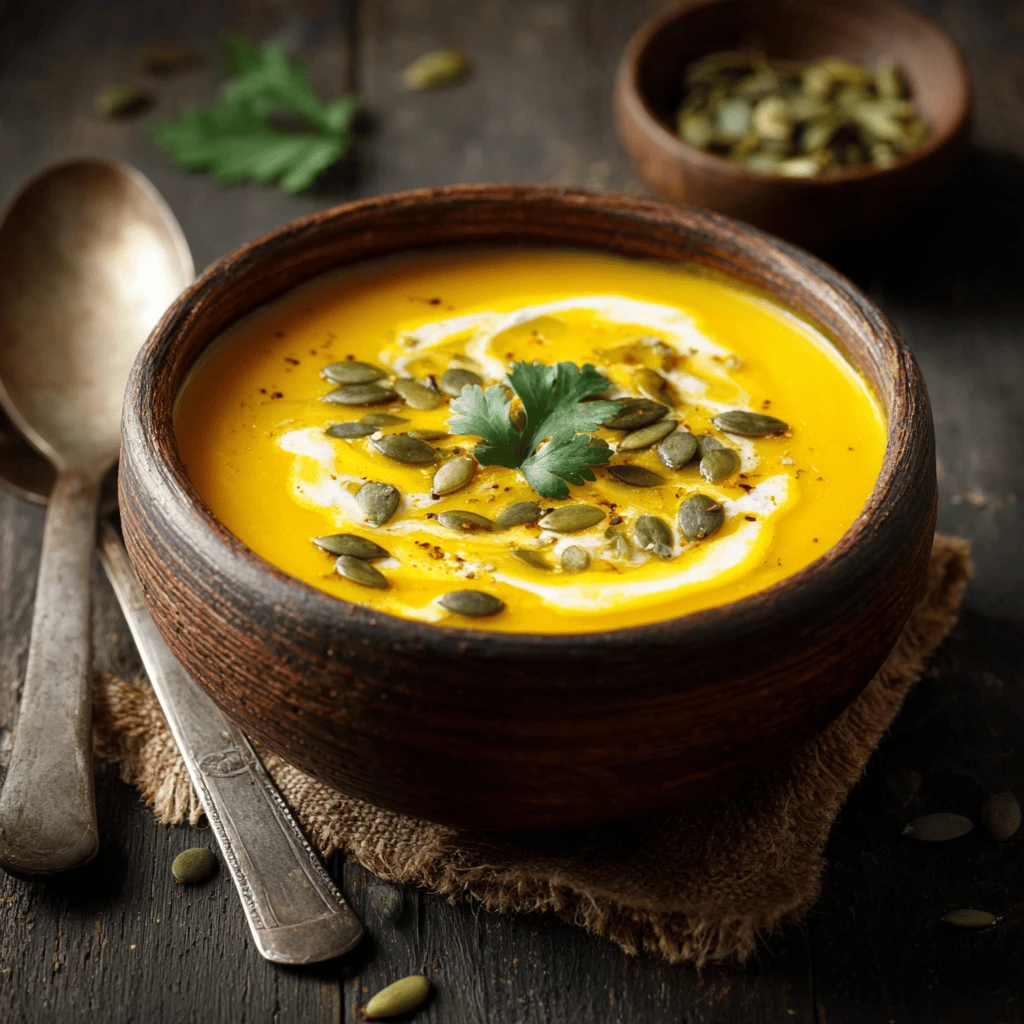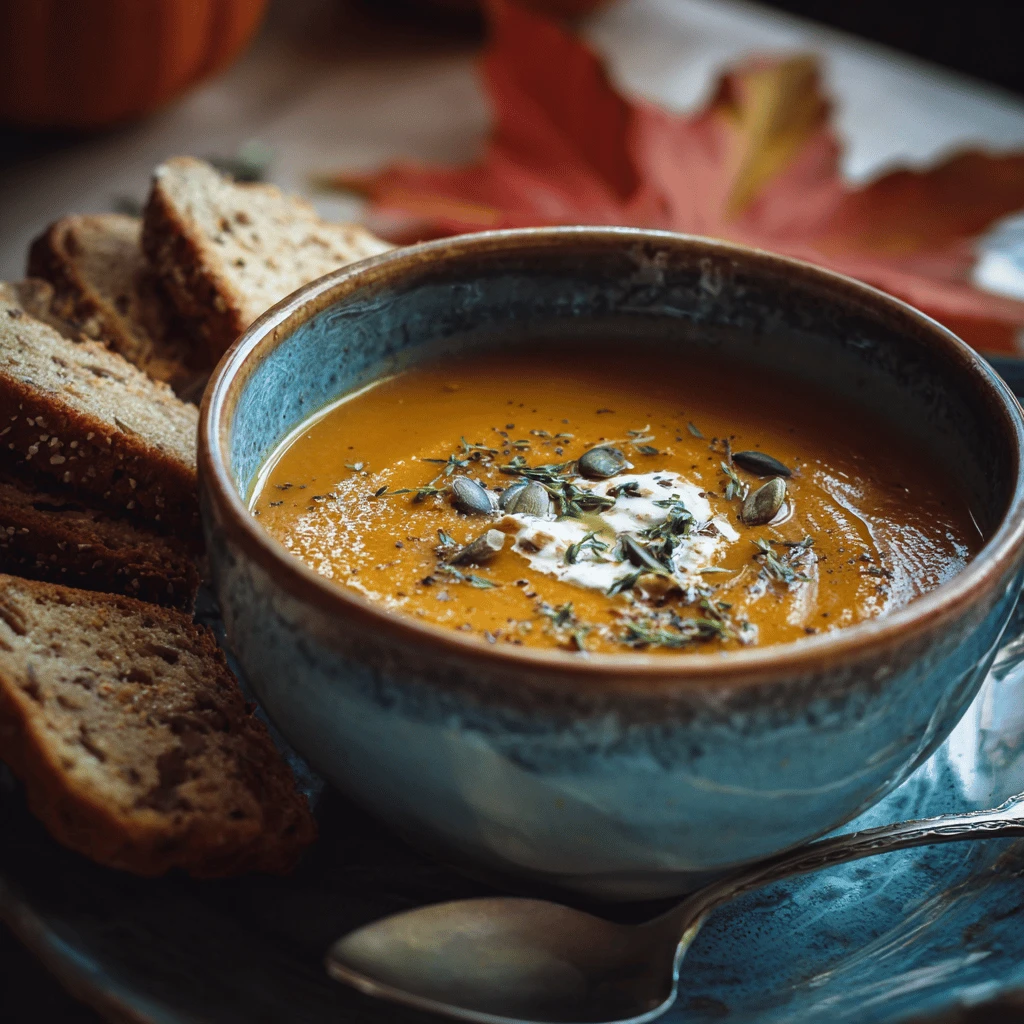Roasted Gluten-Free Pumpkin Soup: A Warm Embrace of Autumn Flavors
As the leaves turn golden and the air grows crisp, few things are as comforting as a bowl of warm, creamy pumpkin soup. This recipe elevates the classic to new heights with a roasting technique that intensifies the natural sweetness of the pumpkin, resulting in a deeply flavorful and satisfying gluten-free soup. Whether you’re looking for a cozy weeknight dinner or an elegant appetizer for a fall gathering, this Roasted Gluten-Free Pumpkin Soup is sure to impress.
The Magic of Roasting: Unleashing Pumpkin’s Full Potential
Roasting pumpkin, instead of boiling or steaming, brings out its inherent sugars and creates a richer, more complex flavor profile. The caramelization process transforms the pumpkin’s texture, making it incredibly tender and easy to blend into a velvety smooth soup. This simple step is the key to unlocking the true potential of your pumpkin and creating a soup that’s truly exceptional.
Choosing the Right Pumpkin
While you can use any type of pumpkin for this soup, some varieties are better suited than others. Sugar pumpkins, also known as pie pumpkins, are ideal due to their sweet, dense flesh and manageable size. Avoid using carving pumpkins, as they tend to be stringy and lack the depth of flavor needed for a truly delicious soup.
Roasting Made Easy
Roasting the pumpkin is a straightforward process. Simply cut the pumpkin in half, scoop out the seeds, and brush the cut sides with olive oil. Place the pumpkin cut-side down on a baking sheet and roast until the flesh is fork-tender. Once cooled slightly, the flesh can be easily scooped out and used in the soup.
Crafting the Perfect Gluten-Free Base
A flavorful base is essential for any great soup. This recipe uses a combination of aromatic vegetables, herbs, and broth to create a foundation that complements the roasted pumpkin perfectly.
Aromatic Foundation: Onions, Garlic, and Celery
Sautéing onions, garlic, and celery in olive oil creates a fragrant base that adds depth and complexity to the soup. These vegetables release their natural flavors as they soften, infusing the oil with a subtle sweetness and savory aroma.
Herbaceous Harmony: Thyme and Sage
Fresh thyme and sage add an earthy, herbaceous note that balances the sweetness of the pumpkin. These herbs pair beautifully with the other ingredients and contribute to the soup’s overall warmth and comforting character.
Broth Matters: Choosing the Right Liquid
For a gluten-free soup, it’s important to choose a broth that is certified gluten-free. Vegetable broth is a great option for a vegetarian version, while chicken broth adds a richer, more savory flavor. Be sure to check the labels carefully to ensure that your broth is free of any gluten-containing ingredients.
Building Layers of Flavor: From Sauté to Simmer
Once the base is prepared, it’s time to add the roasted pumpkin and broth and let the flavors meld together. This simmering process allows the ingredients to infuse each other, creating a soup that is both complex and harmonious.
The Art of Blending: Achieving Velvety Smoothness
After simmering, the soup needs to be blended until smooth and creamy. An immersion blender is a convenient tool for this task, allowing you to blend the soup directly in the pot. Alternatively, you can use a regular blender, but be sure to vent the lid to prevent pressure buildup. Blend until the soup is completely smooth and velvety.
Seasoning to Perfection: A Balancing Act
Seasoning is crucial for bringing out the best in your pumpkin soup. Start with salt and pepper, and then adjust the seasonings to taste. A pinch of nutmeg adds a warm, aromatic note, while a touch of maple syrup can enhance the pumpkin’s natural sweetness.
Elevating the Experience: Garnishes and Pairings
The right garnishes and pairings can take your Roasted Gluten-Free Pumpkin Soup from simple to sublime. Consider adding a swirl of cream, a sprinkle of toasted pumpkin seeds, or a drizzle of olive oil for a touch of elegance.
Garnishes That Delight
- Toasted Pumpkin Seeds: Add a crunchy texture and nutty flavor.
- Crème Fraîche or Coconut Cream: Provides a creamy richness and tangy contrast.
- Crispy Sage Leaves: Offer a fragrant and visually appealing garnish.
- Drizzle of Olive Oil: Adds a touch of elegance and intensifies the flavors.
- Spicy Pepitas: For those who like a kick, these add heat and texture.
Perfect Pairings
- Grilled Cheese Sandwich: A classic comfort food pairing. Use gluten-free bread for a gluten-free meal.
- Side Salad: A light and refreshing counterpoint to the richness of the soup.
- Crusty Gluten-Free Bread: Perfect for dipping and soaking up the delicious broth.
- Roasted Vegetables: Complement the soup’s flavors and add extra nutrients.
Tips and Variations: Making it Your Own
This recipe is a great starting point, but feel free to experiment and make it your own. Here are a few tips and variations to get you started:
Adding Spice: A Touch of Heat
For a spicier soup, add a pinch of cayenne pepper or a few slices of jalapeño to the sautéed vegetables. You can also use a spicy broth or add a dash of hot sauce to the finished soup.
Creamy Dreamy: Dairy-Free Options
To make this soup dairy-free, substitute coconut cream or cashew cream for the heavy cream. These alternatives provide a similar richness and creaminess without the dairy.
Make-Ahead Magic: Preparing in Advance
This soup can be made ahead of time and stored in the refrigerator for up to three days. Reheat gently on the stovetop or in the microwave before serving. The flavors will actually develop and deepen as it sits.
Roasting other Vegetables
Consider roasting a few carrots, sweet potatoes, or apples along with the pumpkin to add another dimension of sweetness and depth. Roasting these vegetables alongside the pumpkin will infuse them all with a delicious, caramelized flavor.
Adding Protein
While this soup is delicious on its own, adding some protein can turn it into a more substantial meal. Consider adding some grilled chicken, roasted chickpeas, or toasted quinoa for added protein and texture.
Frequently Asked Questions
Can I use canned pumpkin puree instead of roasting a pumpkin?
While fresh roasted pumpkin is highly recommended for the best flavor, you can use canned pumpkin puree in a pinch. Use 1 (15-ounce) can of pumpkin puree. The flavor will be less intense, so you may need to adjust the seasonings accordingly.
How do I make this soup vegan?
To make this soup vegan, use vegetable broth and substitute coconut cream or cashew cream for the heavy cream. Ensure your broth is suitable for vegans.
Can I freeze pumpkin soup?
Yes, pumpkin soup freezes very well. Allow the soup to cool completely before transferring it to freezer-safe containers or bags. Freeze for up to 3 months. Thaw overnight in the refrigerator before reheating.
What if my soup is too thick?
If your soup is too thick, add a little more broth or water until it reaches your desired consistency.
How long does pumpkin soup last in the refrigerator?
Properly stored, pumpkin soup will last for 3-4 days in the refrigerator. Ensure it’s in an airtight container.




